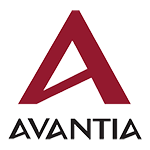Why Do a Technical Assessment?
The technical assessment is a foundational part of a legacy systems health check, providing a clear picture of a system’s current technical state. It identifies vulnerabilities, inefficiencies, and technical debt that could compromise performance, reliability, or security. Without this assessment, businesses risk overlooking critical weaknesses that may lead to unexpected downtime, data breaches, or escalating maintenance costs. A thorough technical evaluation ensures that systems are optimized, well-supported, and aligned with business objectives, paving the way for informed decision-making on upgrades or replacements.
Key Areas of the Technical Assessment
Follow this step-by-step guide to perform a thorough, and comprehensive Technical Assessment as part of your overall legacy systems health check.
- Version and Patch Level Review
This step ensures that all software components, including the system itself and its dependencies, are running the latest versions and patches. Outdated versions often introduce security vulnerabilities or compatibility issues, while patches address known bugs or weaknesses.
Why it matters:
- Mitigates security vulnerabilities that attackers could exploit.
- Improves system compatibility with newer technologies.
- Reduces the risk of performance issues caused by outdated components.
- Dependencies Analysis
The analysis examines libraries, frameworks, and third-party integrations that the system relies on. This helps identify unsupported or outdated components that could affect system stability.
Why it matters:
- Ensures continued support for critical system components.
- Helps avoid disruptions caused by breaking changes in dependencies.
- Identifies opportunities to modernize the system with updated tools or frameworks.
- Performance Metrics Evaluation
This evaluation measures system performance under typical and peak workloads, uncovering inefficiencies or bottlenecks that may affect user experience.
Why it matters:
- Highlights areas where the system slows down under load.
- Ensures scalability to meet future business demands.
- Enhances user satisfaction with faster, more reliable systems.
- Integration Points Assessment
This step reviews the system's connections to other software or platforms to ensure smooth data flow and compatibility. It identifies misalignments or inefficiencies in these integrations.
Why it matters:
- Minimizes errors caused by misaligned or outdated integrations.
- Supports seamless data exchange across systems.
- Enhances overall system efficiency by streamlining workflows.
- Code Quality Review
If source code is available, a detailed review highlights areas of poor-quality code that may affect maintainability, security, or performance.
Why it matters:
- Identifies technical debt that could increase future costs.
- Improves system security by exposing coding vulnerabilities.
- Facilitates easier and faster updates or enhancements.
- Technical Debt Assessment
This step quantifies the accumulated technical shortcuts taken during development, providing a clear view of the effort required to address these issues.
Why it matters:
- Enables informed budgeting for system improvements.
- Reduces long-term risks associated with neglected maintenance.
- Ensures the system can adapt to future business needs with minimal friction.
Engage with Avantia for a Comprehensive Health Check
A thorough technical assessment is crucial for optimizing system performance, minimizing risks, and aligning technology with business goals. By partnering with Avantia for your Health Check Service, you’ll gain actionable insights to make informed decisions about your software.
Stay tuned for future articles detailing other components of our Health Check Service, such as Business Impact and Compliance Analysis. Contact us today to start your journey toward a more efficient and secure software landscape!
Let's Partner
Avantia is here to help you navigate the ins and outs of the technical assessment as part of your overall legacy systems health check.


